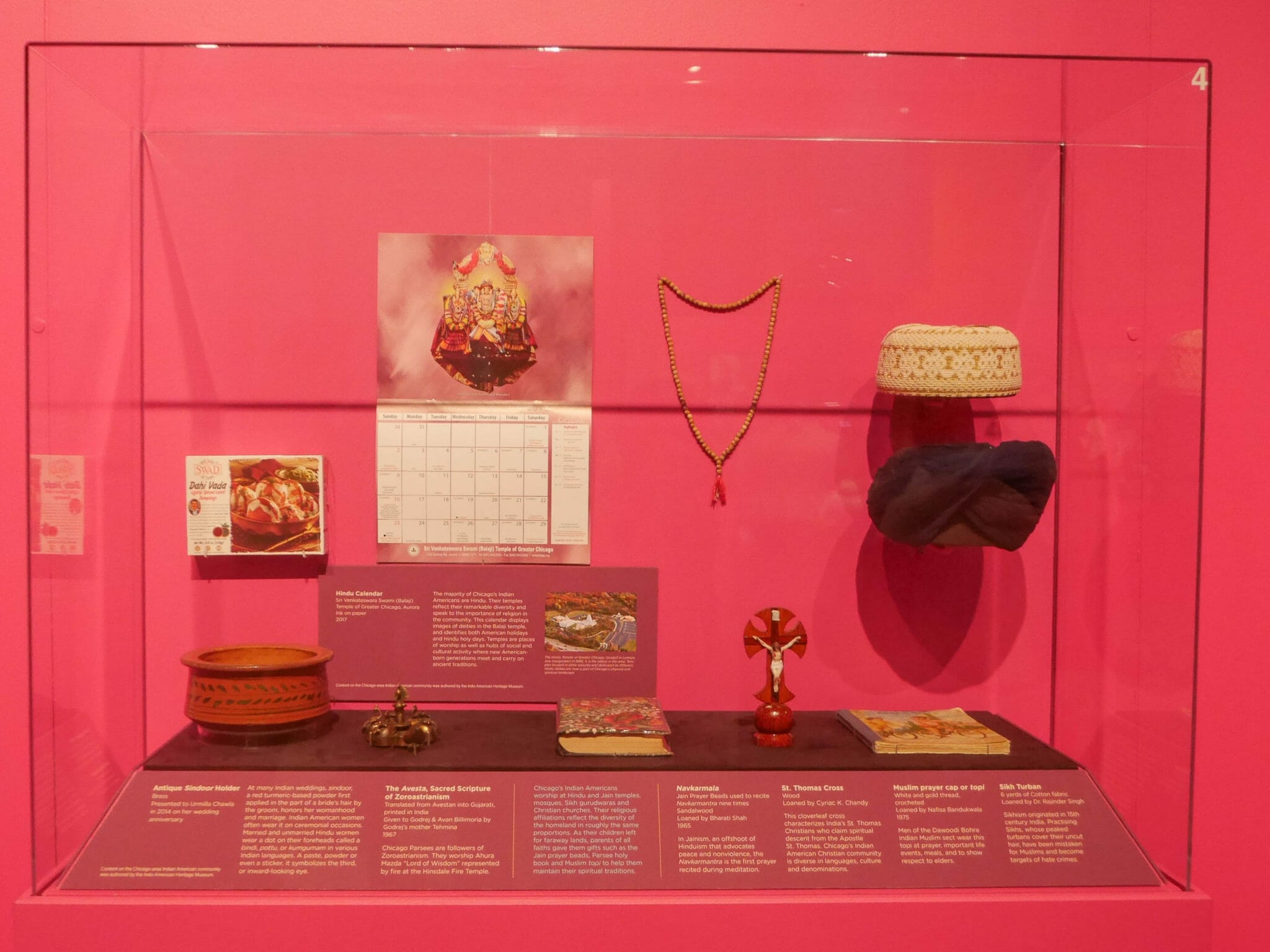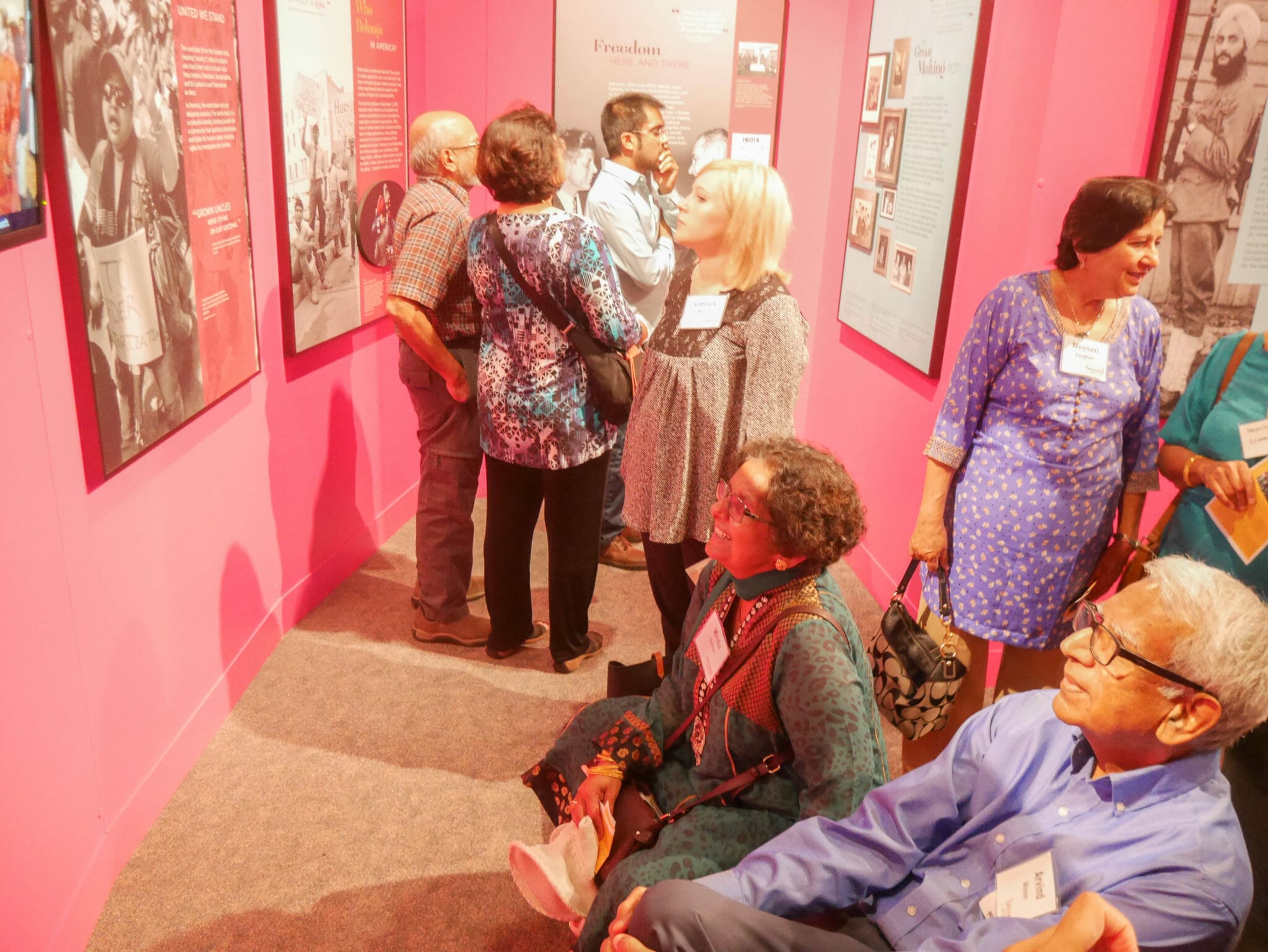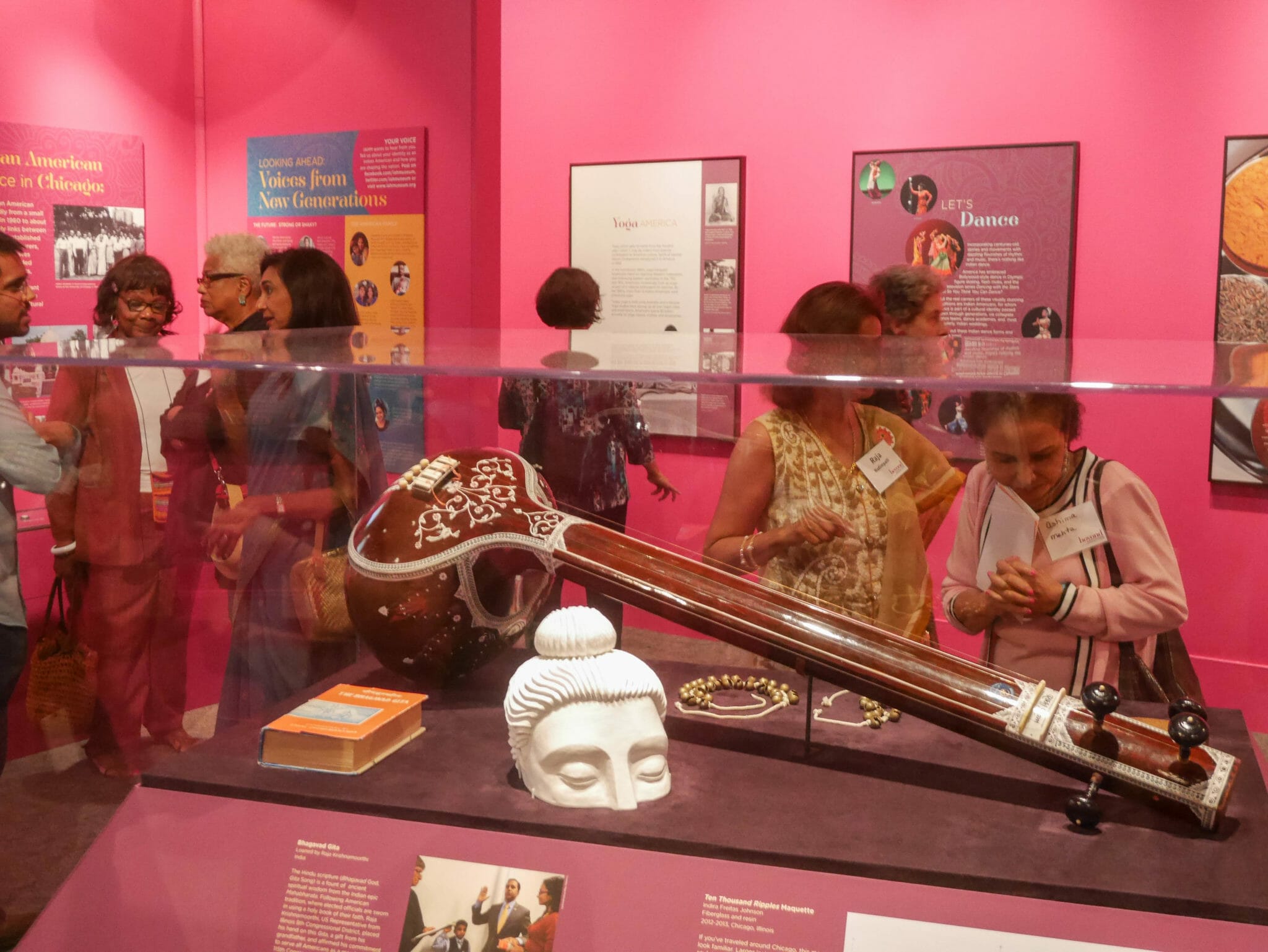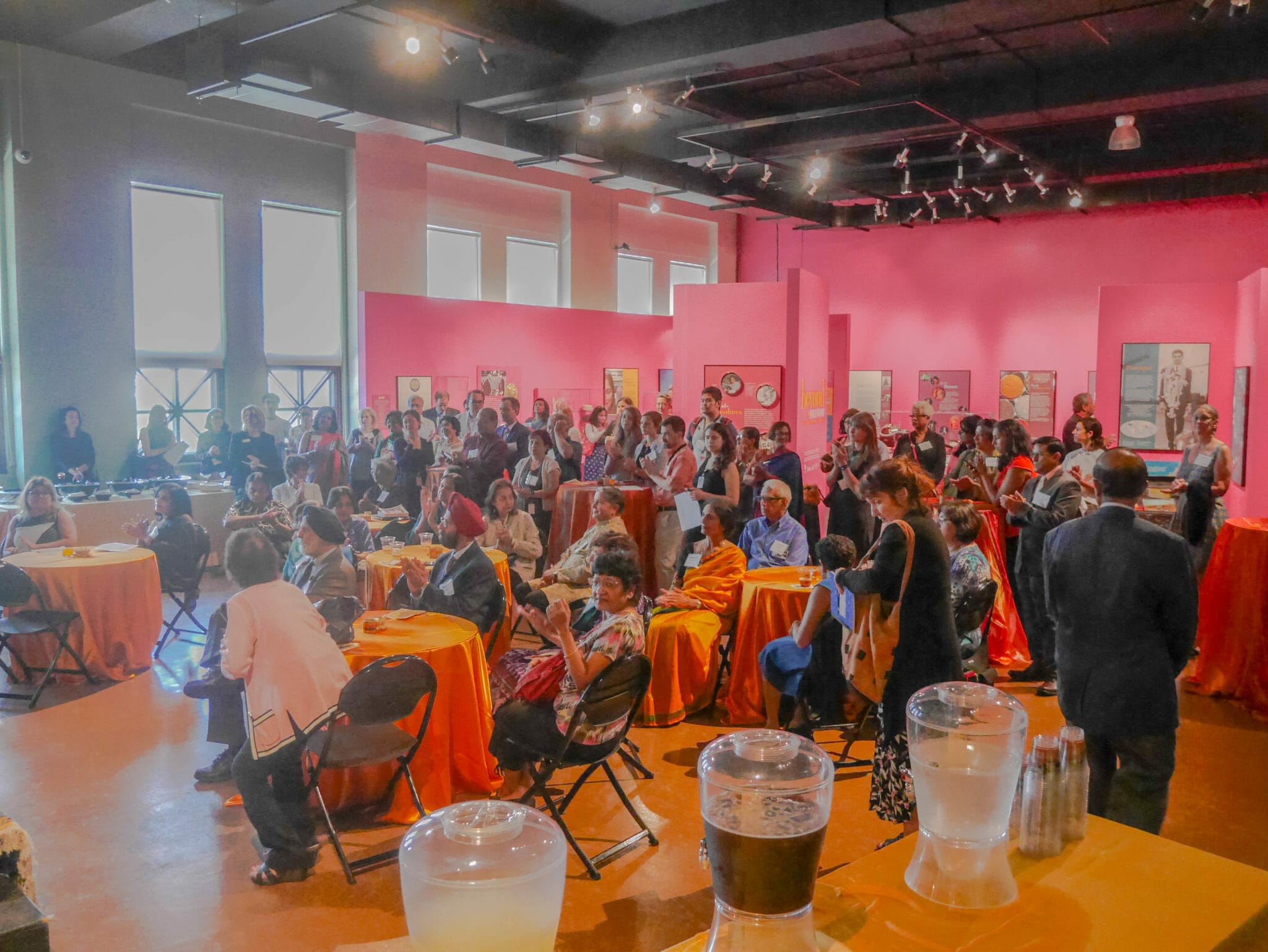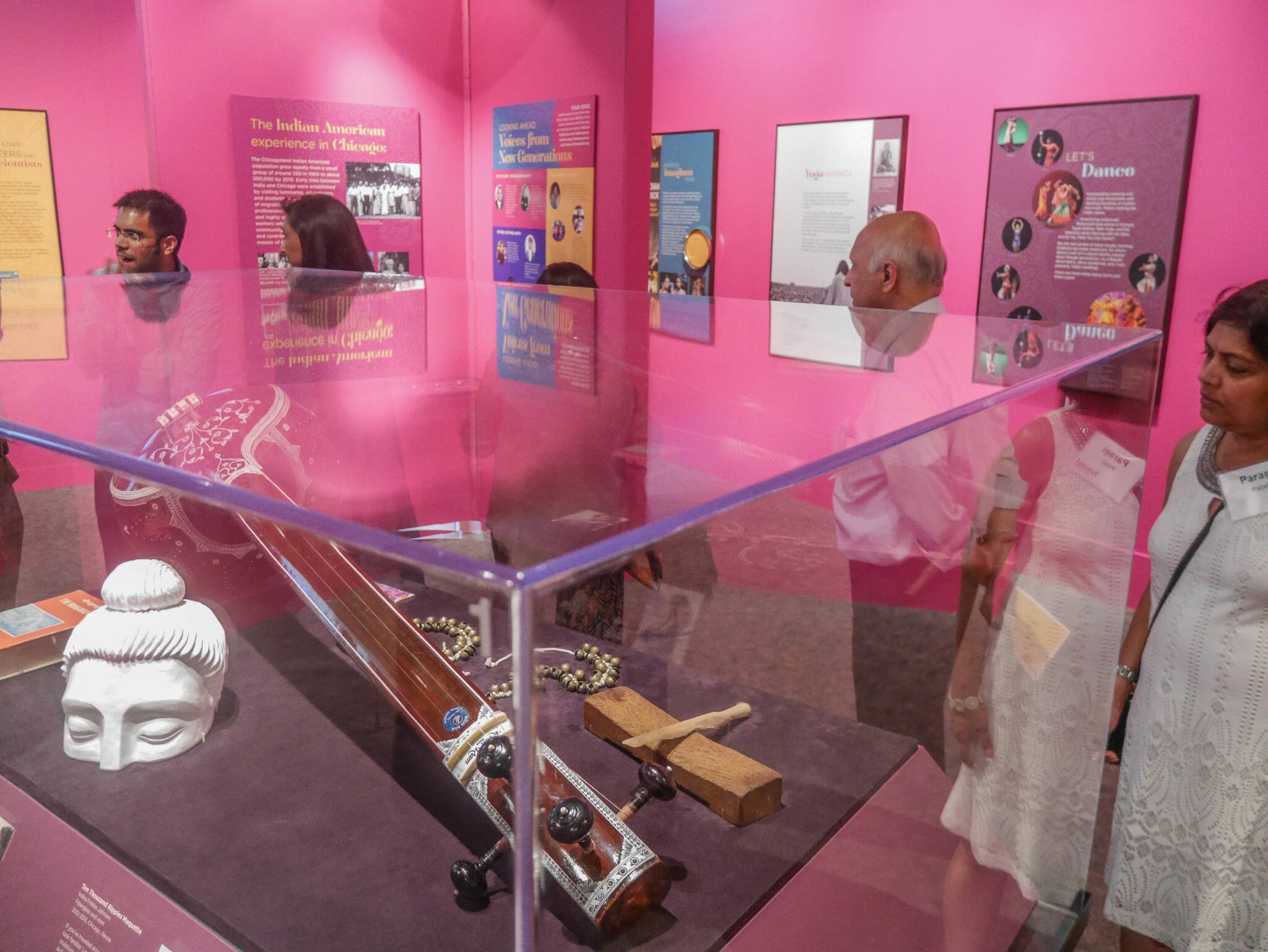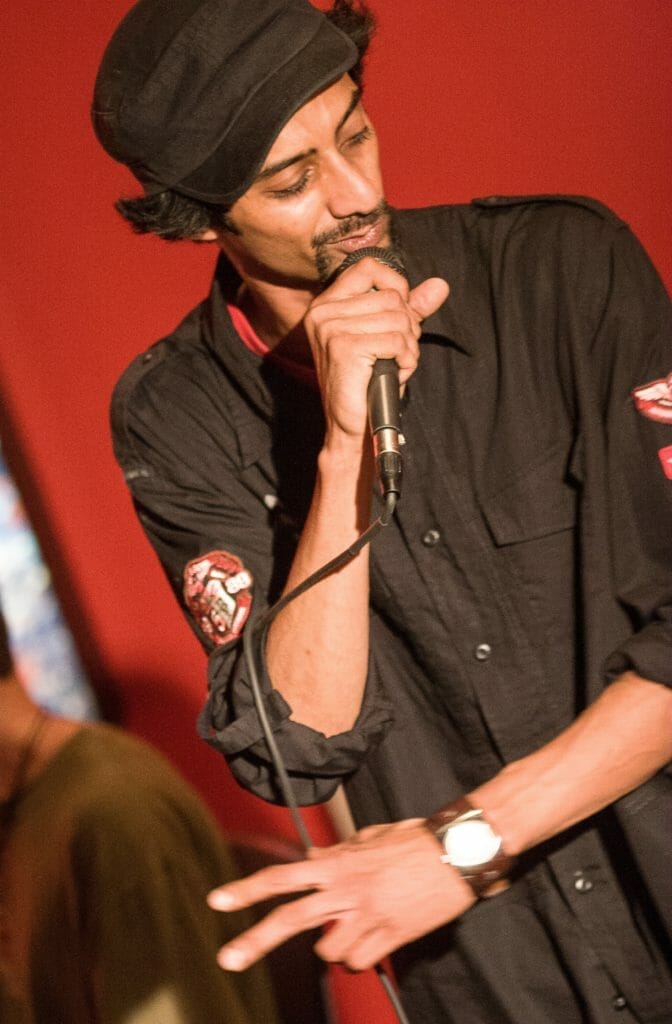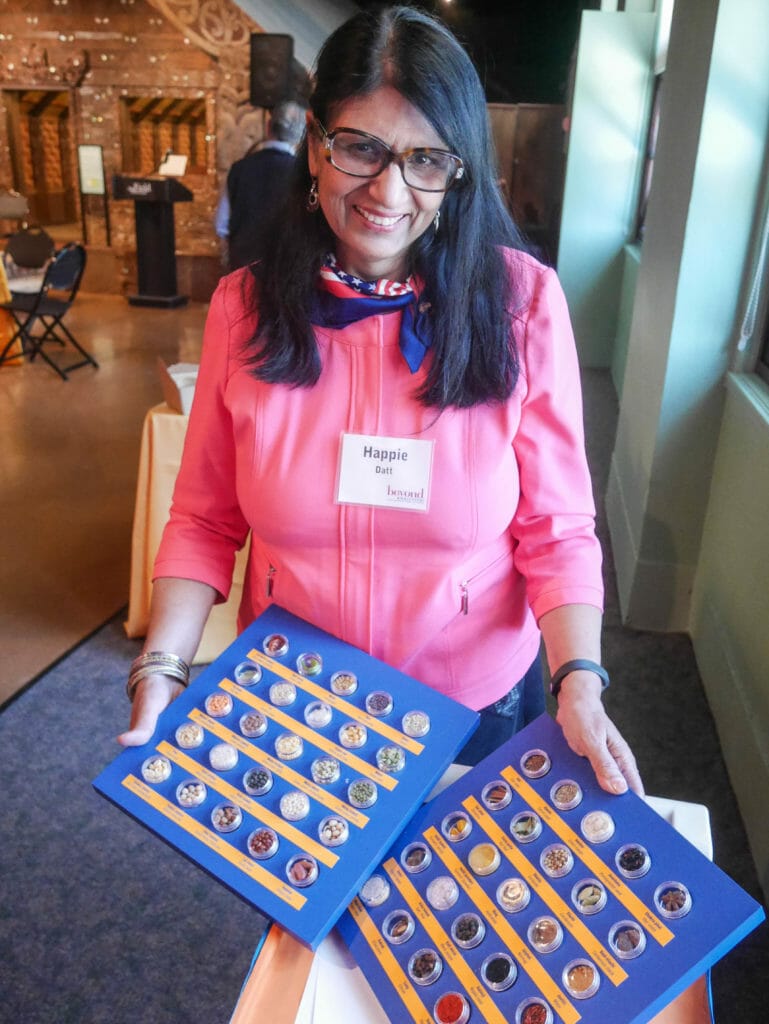Field Museum Hosts Traveling Smithsonian Exhibit
Amidst the sound of silken sari rustles and sitar strums, a crowd of enthusiastic Desi expats and some first generation descendants mingled with the media and other invitees to the unveiling of BEYOND BOLLYWOOD: Indian Americans Shape the Nation.
In a relatively compact space, we ambled between enclosed glass display cases holding various treasures—from etched metal patents to Sikh turbans to ankle bracelets worn by traditional Indian dancers and more— and picture-rich posters that told the story of what it was and is to be a Desi-born immigrant.

This exhibit, one of several created by the Smithsonian Traveling Exhibition Service, could also be subtitled, STEREOTYPE BUSTER! If your first mental image of an Indian-born immigrant it that kindly doctor who was so generous with his time when your spouse had a health scare, adjust it to also see a turbaned Sikh basketball player by his side. Do you smell curry and get an earworm of Ravi Shankar? Fit in the sounds of hip-hop now too! From software engineers who gave us computer chip breakthroughs to taxicab drivers to Nobel Prize Laureates— BEYOND BOLLYWOOD truly does give a picture of how Indian Americans have contributed beyond their numbers to America’s vitality.
Overcoming Discrimination
For this writer, the best parts of this exhibit were the historical accounts of the racism and waves of anti-immigrant hysteria that Indian immigrants have had to brook through the years. Without embellishment or whitewash, some of the wall posters tell the story of discrimination de jure and de facto—unfortunately bringing us to the present day when post 9 - 11 hysteria seemed to license hate crimes anew.
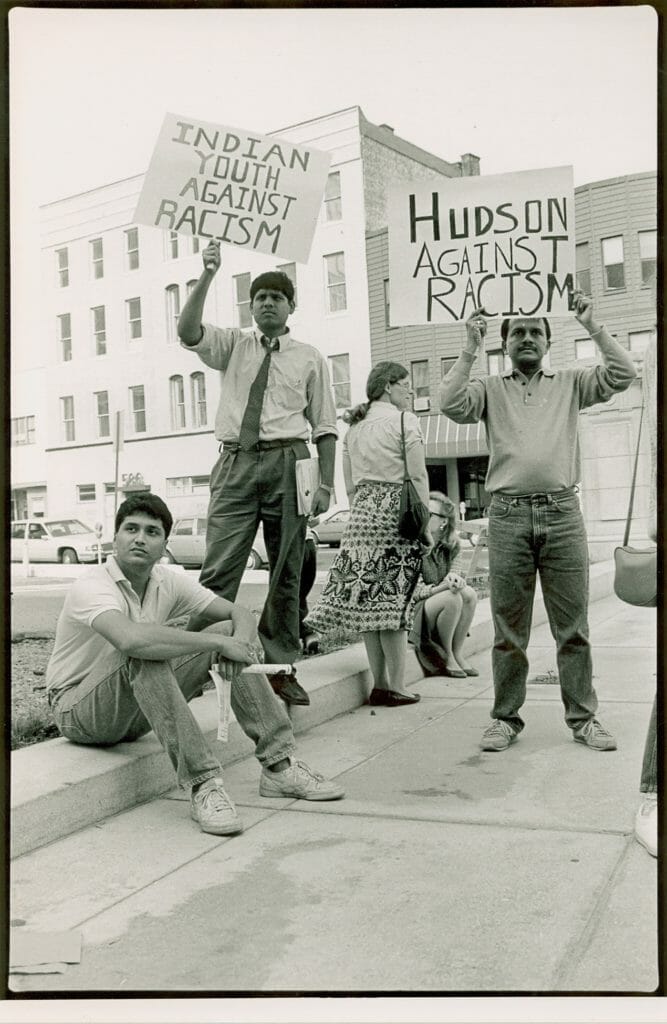
Trademark IAHM
For those of us who have had the chance to enjoy a TASTE OF DEVON or other event hosted by IAHM (INDO-AMERICAN HERITAGE MUSEUM), it comes as no surprise that this exhibit packs in so much intelligence in its narrative and artifact displays. Chicago-born IAHM, the Smithsonian’s partner in this bound-for-travel exhibit, has in one way or another been rallying members of Chicagoland’s Indo-American diaspora to tell their stories, share their culture and promote understanding of all things Indian since their Day One (2008), working with the Field Museum (Chicago host of this BEYOND BOLLYWOOD exhibit) and a wide range of other museums and cultural institutions in Chicagoland. When the Smithsonian sought out partners for their more than a dozen venues across America to showcase our immigrants’ stories IAHM was obviously an amazing find to help condense the experience of the more than 3 million Indian-born Americans today.
Indeed your visit to this exhibit will be VERY enhanced if and when you can catch a docent from the IAHM. Personable Happie Datt, who happens to both be a seasoned Field Museum docent AND an IAHM tour leader and community educator, helped to write the training manual for the BEYOND BOLLYWOOD docents. Some tours are more formally scheduled such that you can call the Field Museum front desk at 312 922 9410 to find out what tours are on the docket. But if you are lucky, you might be able to find an IAHM member standing by in the exhibit who has arrived on a more ad hoc basis to share their enthusiasm for all things Indo-American culture.
Or to find out about IAHM’s ongoing cultural programming – from dance performances, to cricket games, to lectures and more, visit the very informative IAHM website.
When:
Through January 7, 2018
During regular Field Museum hours— 9 – 5 daily except Christmas
Where:
Field Museum
1400 South Lakeshore Drive
Chicago
Tickets:
$36, discounts for seniors, children and students
This is admission price for entire Field Museum
Photo Credits as shown. Additionally, feature photo is of the Sharma family in San Francisco in 1983, photo Prithvi Sharma.
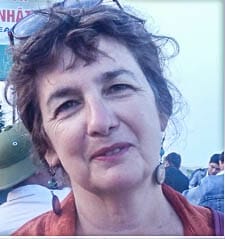
About the Author: Amy Munice
Amy Munice is Editor-in-Chief and Co-Publisher of Picture This Post. She covers books, dance, film, theater, music, museums and travel. Prior to founding Picture This Post, Amy was a freelance writer and global PR specialist for decades—writing and ghostwriting thousands of articles and promotional communications on a wide range of technical and not-so-technical topics.
Amy hopes the magazine’s click-a-picture-to-read-a-vivid-account format will nourish those ever hunting for under-discovered cultural treasures. She especially loves writing articles about travel finds, showcasing works by cultural warriors of a progressive bent, and shining a light on bold, creative strokes by fledgling artists in all genres.

